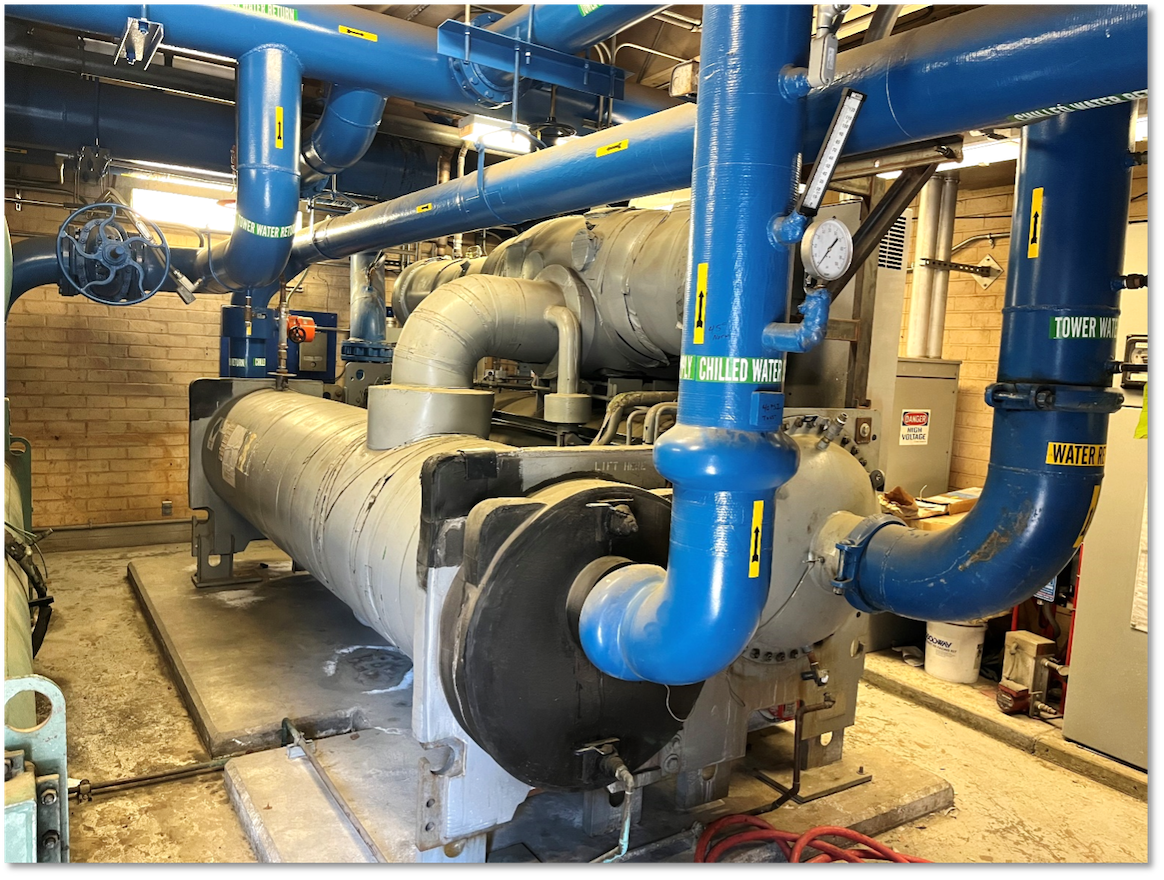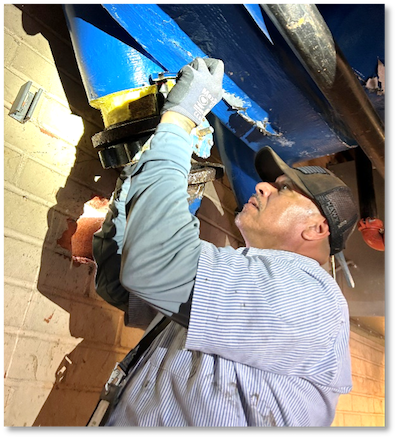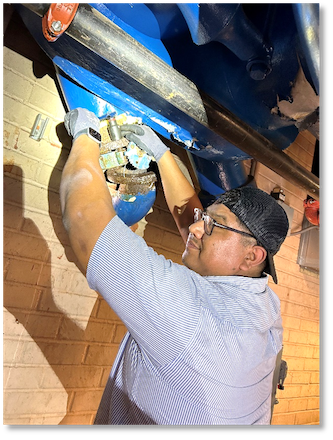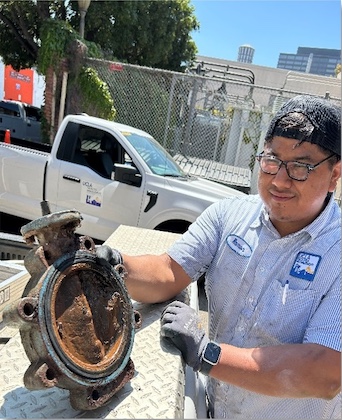In mid-June, the West Med chiller plant faced a significant operational challenge when a Carrier screw chiller experienced an unexpected electrical failure. This incident threatened to disrupt the facility’s cooling capacity during the peak of summer, necessitating swift action from the maintenance and engineering.
Emergency Response and Restoration of the 1986 York Chiller
With the newer Carrier chiller offline, the team resorted to a mothballed 1986 York chiller, which had been decommissioned years earlier but remained on-site. Although outdated, the York chiller presented a viable short-term solution to the crisis.
Restoring the 1986 York chiller to operational status was no small feat. The unit had been out of service for an extended period and required a comprehensive overhaul before it could be brought back online. The engineering team inspected and addressed the chillers aged components, refrigerant handling, and control system integration. Within a matter of days, the York chiller was successfully restored, providing the necessary cooling capacity to sustain the facility’s operations. This interim solution demonstrated the value of maintaining older equipment as a contingency, even when it is no longer part of the active system.
Implementation of a Temporary Chiller Solution
While the York chiller served its purpose, relying on an aging unit was not a sustainable long-term solution. To ensure continued reliability, the team brought in a temporary chiller from an external provider. This temporary chiller would serve as a backup and eventually replace the York chiller in the cooling loop.
The logistics of integrating the temporary chiller posed several challenges. The unit needed to be connected to the existing chiller plant infrastructure, which required last-minute modifications to the plant's valve configuration. These valve changes were crucial for directing the flow of chilled water and ensuring seamless operation between the temporary chiller and the existing system.
To accommodate the temporary chiller, the team also had to prepare an external site adjacent to the chiller plant. This involved not only the physical placement of the chiller but also ensuring proper electrical connections, piping, and controls. The project demanded close coordination among the trades, including electrical, and HVAC Engineers, to meet the tight deadlines.
The West Med chiller plant’s response to the Carrier chiller’s electrical failure in June showcased the importance of adaptability and resourcefulness in maintaining critical infrastructure. By restoring the 1986 York chiller and implementing a temporary chiller solution, the facility was able to avoid significant downtime and continue providing essential cooling services throughout the summer. This also highlighted the need for ongoing investment in both modern and backup systems. As the facility moves forward, these lessons will be invaluable in planning future upgrades and preventing similar incidents from impacting operations.
The trades involved in this project demonstrated exceptional skill and dedication, to ensure that the West Med chiller plant could continue to operate smoothly under challenging circumstances. Their efforts underscore the critical role of tradespeople in maintaining the infrastructure that supports essential services across our campus.





